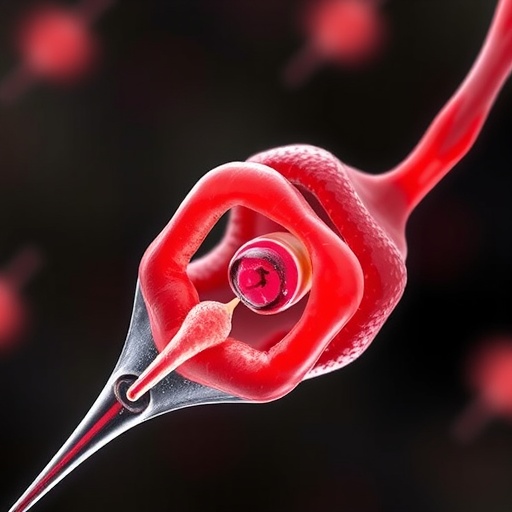The intricate world of sperm physiology has long captivated researchers, especially the fascinating mechanics behind sperm motility and the essential role of the mitochondrial sheath. Recent investigations shed light on the sophisticated nature of this structure, which is critical not only for stimulating movement within the challenging female reproductive tract but also for facilitating successful fertilization. As scientists piece together the complex interactions that underpin sperm function, they are beginning to redefine long-held beliefs about energy production in these dedicated gametes.
Sperm tails are unique structures, often seen merely as propulsion devices, yet they share similarities with motile cilia prevalent in various tissues across the body. The similarities can be drawn from the evolutionary lineage that links these cellular structures. Cilia found in the lungs and brain, responsible for diverse functions, underline the fundamental importance of motility in the human body while mirror a specific adaptation seen in sperm. The sperm tail provides a striking example of evolution fine-tuning cellular machinery to meet the demands placed upon it during the reproductive process.
Delving deeper into the architecture of the sperm tail, researchers identified three distinct regions—the midpiece, the principal piece, and the end piece—each meticulously crafted to execute its specific role in motility. The midpiece, which houses the crucial mitochondrial sheath, is particularly noteworthy. This sheath is not merely a physical barrier but is paramount for maintaining structural integrity, thereby supporting the energetic demands required for the dynamic swimming behavior of sperm. Without this energy-generating factory, the efficient performance of sperm would be greatly compromised.
Traditionally, the midpiece has been understood as the powerhouse of sperm, with mitochondria within it responsible for energy production mainly through ATP synthesis. Past theories suggested a strict separation of glycolysis and mitochondrial respiration processes, leading to a misunderstanding of how energy generation occurs in sperm. Recent studies reveal that this assumption is flawed, and there exists substantial crosstalk between glycolytic pathways and mitochondrial function. This intertwined relationship allows for a more robust and adaptable energy production system, vital for the diverse motility and competitive success that sperm face.
At the core of this research is a desire to disentangle the complexities of mitochondrial sheath assembly and maturation. As the biological mechanisms governing these processes remain elusive, researchers are increasingly motivated to uncover them. By probing the intricacies of the mitochondrial sheath and its contributions, the research community hopes to bridge gaps in our understanding that could have broader implications. The relationship between mitochondrial dynamics and sperm function informs not only the narrative of male fertility but also hones in on potential targets for contraception.
Moreover, these insights pave the way for innovative approaches to address male infertility. As the medical community becomes more aware of the influence of metabolic pathways on sperm viability and motility, new strategies may emerge to enhance reproductive health. Identifying and understanding the factors that contribute to mitochondrial dysfunction in sperm could establish novel preventative measures or interventions for men facing infertility challenges.
Beyond reproduction, mitochondrial dynamics and the principles uncovered in the context of sperm can reflect on other bodily systems. As ciliary dysfunction can lead to a multitude of disorders, understanding the intersection of energy metabolism and cellular function could provide insights that are applicable across various tissues. The interconnectedness of these cellular processes underlines the powerful narrative that biology tells about energy efficiency and adaptability, regardless of compartmentalization.
The research thus not only steers the discussion on sperm functionality but also stirs curiosity about physiological parallels. The mitochondrial sheath’s role highlights the evolutionary imperative for optimizing energy production and cellular performativity in hostile environments. Sperm’s unique evolutionary strategy underscores a critical aspect of biological design—survival and optimization through specialization.
In conclusion, the unraveling of the sperm’s mitochondrial sheath presents an exciting frontier in reproductive biology. As more investigations unfold, they will undoubtedly enhance our understanding of male fertility and may reshape the scientific narrative on contraception, implicating mitochondrial function as a watershed element of broader biological significance. The forthcoming insights into the assembly, maturation, and functionality of sperm tails promise not only to elucidate complex reproductive challenges but also to bridge our understanding across myriad biological tissues.
Moving forward, there exists a call to action within the scientific community to propel research agendas that investigate these mitochondrial dynamics further. Unraveling how sperm navigate their energetic demands while elegantly maintaining function amid harsh conditions may yield vital insights into other biological systems that struggle with energy regulation. The implications of this research extend beyond reproductive health, offering a broader examination of cellular efficiency and adaptability across different cellular contexts.
In a world where biological intricacies meet reproductive imperatives, understanding the sperm’s mitochondrial sheath forms the backbone of a promising avenue in both basic and translational research. As scientists confront the mysteries of life’s building blocks, it is clear that even the minutiae of cellular architecture carry profound implications for health and fertility, indicating that the journey of exploration is just beginning.
Subject of Research: The formation and functionality of the mitochondrial sheath in sperm.
Article Title: Sperm mitochondrial sheath formation — how and why?.
Article References:
Graffeo, M.L., Dunleavy, J.E.M., Houston, B.J. et al. Sperm mitochondrial sheath formation — how and why?.
Nat Rev Urol (2025). https://doi.org/10.1038/s41585-025-01109-4
Image Credits: AI Generated
DOI:
Keywords: Sperm motility, Mitochondrial sheath, Fertility, Male infertility, Energy production, Glycolysis, Mitochondrial respiration, Cellular function, Evolution, Reproductive biology.
Tags: challenges in female reproductive tract for spermcilia similarities in motilityevolutionary adaptations of sperm tailsgamete energy dynamicsintricate sperm motility interactionsmitochondrial sheath function in spermrole of mitochondria in sperm energy productionsignificance of mitochondrial sheath in fertilizationsperm motility mechanismssperm physiology and reproductive successsperm tail evolution and designstructure and function of sperm tail regions





